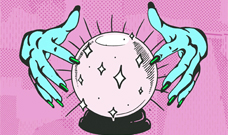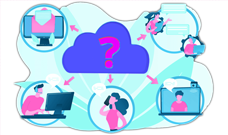Should you apologize to your customers?
Harry Gordon Selfridge used to claim that the customer is always right. What is certain is that the company isn’t always right, and when it isn’t, it must explain the situation to its customer. But should it apologize?

A dissatisfied customer isn't something to take lightly.
When a customer has a poor experience with your service or your product, there are a few options available:
- Ignoring the issue and hoping for the best: no-one likes to be ignored and the frustration would only grow
- Blaming someone/something: "not my fault", "our supplier in to blame", etc. This approach doesn't really appease the customer and often backfires
- Explaining the issue: things went wrong, you acknowledge it and briefly explain why but your customer wants a solution more than an explanation
- Apologizing: whether you are at fault or not, you simply apologize and promise it will never happen again
- Offering something: you offer a small promotion or discount to be used on the next order as a token of regret
Which strategy makes most sense? Which should you implement?
The right approach to apologies
A recent study from four economists (Basil Halperin, Benjamin Ho, John List, Ian Muir) analyzes the impact of apologies on 1,5 million Uber ridesharing consumers who experienced late rides.
The first finding of that study is that apologies don't necessarily have a positive effect. A sincere apology implies that the problem will not occur again. When the same problem occurs multiple times, apologies tend to have a negative effect (worse than doing nothing).
The second finding is that the most effective type of apology is a free coupon... with or without any actual apology text. It also shows that apologizing without giving anything away could potentially have a negative effect.
Companies do not often apologize because they know it could backfire while giving something away could encourage the customer to remain loyal to the brand.
So, what should you be doing when a customer had a bad experience?
The first time
Apologize for what happened and immediately offer a discount / promotion on the next purchase. This way you both reduce his frustration and give him a feeling of justice while encouraging him to purchase from you in the future. Do not make any promise you can't keep.
Following times
If the same problem was to occur again, offer a little something immediately to ease the situation.
Overall, the cost of discounts would be lower than losing the customer altogether or turning him into a detractor. Moreover, the study shows that giving such a coupon after a bad ride was more cost-effective than $5 coupons given at random.
(Keep in mind that not every customer is worth keeping)
What you should do to prevent the need for apologies
There are situations where you will need to apologize because it is too late and a mistake was made. But there are also situations where you could solve the problem before it even occurs.

Think of your customer as someone hiking with a backpack. He is walking, and each small problem he encounters is an extra brick in his bag.
When a big problem occurs, your customer tends to inform you immediately, demanding an apology and a solution. But when multiple small frustrations accumulate, you may not even be aware of it.
Your customer gets more and more bricks to carry, each one making the trip a little less enjoyable, until he is just too tired to carry it and leaves your company without explanation: too late to apologize, too late to repair.
Make yourself easy to reach
To avoid such situation, you will need to give convenient ways for your customer to raise his hand and let you help him unburden his bag along the way.
Think about it: when you feel frustrated with a service provider, if the problem isn't too big, you will probably not want to bother calling as it would only reinforce your frustration. You will keep this issue for yourself.
On the other hand, if the service provider was giving you convenient ways to bring up your problem (through WhatsApp or Messenger for example) with very little effort from your end, you may do it and get your problem solved.
Each time a customer reaches out with a small issue is a great opportunity to offer an outstanding service and eventually an apology and a discount when relevant.

Monitor your customer's journey
There are a few key milestones in a customer's journey where it becomes easy to give up - these are elements you must monitor closely.
It could be the unsubscribe page on your website, your cart page, specific sections of your FAQ, etc. It could simply be to give priority to customers contacting you when a specific keyword is used in the conversation, making sure you address these customers first.
To reduce your churn rate while keeping your customers happy, monitor these milestones and engage with your customers before it is too late.
In the end, it is all a matter of empathy: put yourself in your customers shoes and ask yourself "what would I want in this situation?". Apologies only bring you so far. Be prepared to go the extra mile.
Last update: 2024-04-23 Tags: customer service customer care customer experience apology angry customer





















 Français
Français English
English